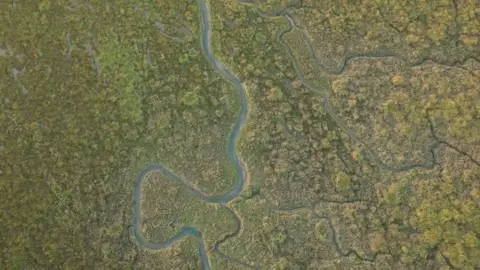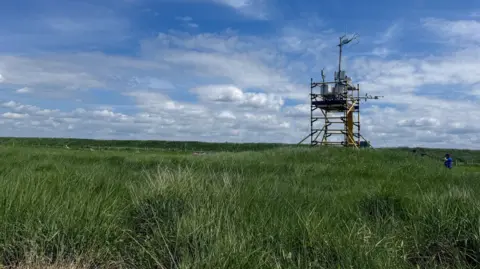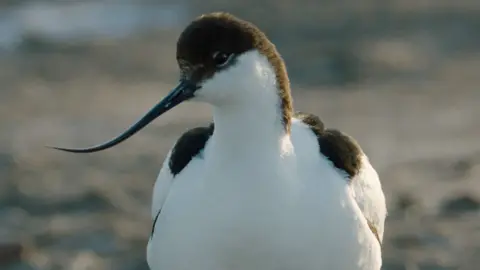Science reporter, BBC News
 Wwf
WwfAccording to a new report from the UK Saltmarshes, the WWF, the vital “sinks” locks the port-warming greenhouse gases, which canceled the semi-sized greenhouse gas.
Most of the United Kingdom’s Saltmarshes lost to agriculture, but charity and nature say they are a restrained hero in the fight against climate change.
Now it calls for this muddy, tidal residences, the official inventory of carbon and how much the carbon is removed from our atmosphere every year.
It is official recognition, hopefully, these sites can be more encouraged to restore and maintain more.
 Victoria Gill / BBC
Victoria Gill / BBCThe WWF team, which works with researchers of the British Center of Ecology and Hydrology, installed sunroof gas station monitoring stations in a Salt DSPB in northwestern Northwest in northwestern England.
Analyzing gases in the air flowing around Marsh around a year – in a year – the “breathed” with carbon dioxide than they were released in winter, “they breathe”.
These new findings are built in previous research that measures the amount of carbon in the mud’s mud.
The team was made of Iskala poles to implement it. The site is regularly flooded by the tide, so the tower set was safe from salty water and garbage.
WWF’s Ocean Protection Specialist, Tom Brook as our guide, we received the thigh with the thigh to visit the website.
 RSPB
RSPBIn the lower tide, the sea does not appear outside the meadows, but the territory is full of some plastic waste, and there is a small, developed boat nearby.
“The plants grow in spring and spring so that they grow up and down on each other and split and break down.” “This is carbon in the lands. Thus, when the trees breathe in carbon and kept in the tree, he taught salt swamps like mud.
“Thus, it is important to reduce climate like mud trees.”
WWF has published the first year of findings in a report called England’s significance of Saltmarshes. Unusual, it was developed with an insurance company that is interested in understanding the role of these sites that protect the houses from the coastal transport.
England has lost 85% of their salts since 1860. They were seen as useless land and many were dried for agriculture.
 Victoria Gill / BBC News
Victoria Gill / BBC NewsHesketh Out Marsh was restored – wildlife was purchased by the philanthropist RSPB and was re-watered by the tide. Now, in late spring, the bird is full of life. Different species, including avocles, oysters and black-tailed Godwits, build mud in the land between food and streams.
Researchers hope that the findings will help you to restore and maintain more of these mud berefers between the territory and the sea of these mud.
“The mud here is so important,” said Alex Pigott, RSPB’s guard. “It’s like a service station for birds.”
With different shaped sheets – a little sliding and some are ideal for testing – Marshland Birds feed on the tidal mud.
“We know that these sites play the role of natural flood protection and kept carbon,” MS Pigott said. “Any of these habitats we can recover will be a great victory for nature.”





